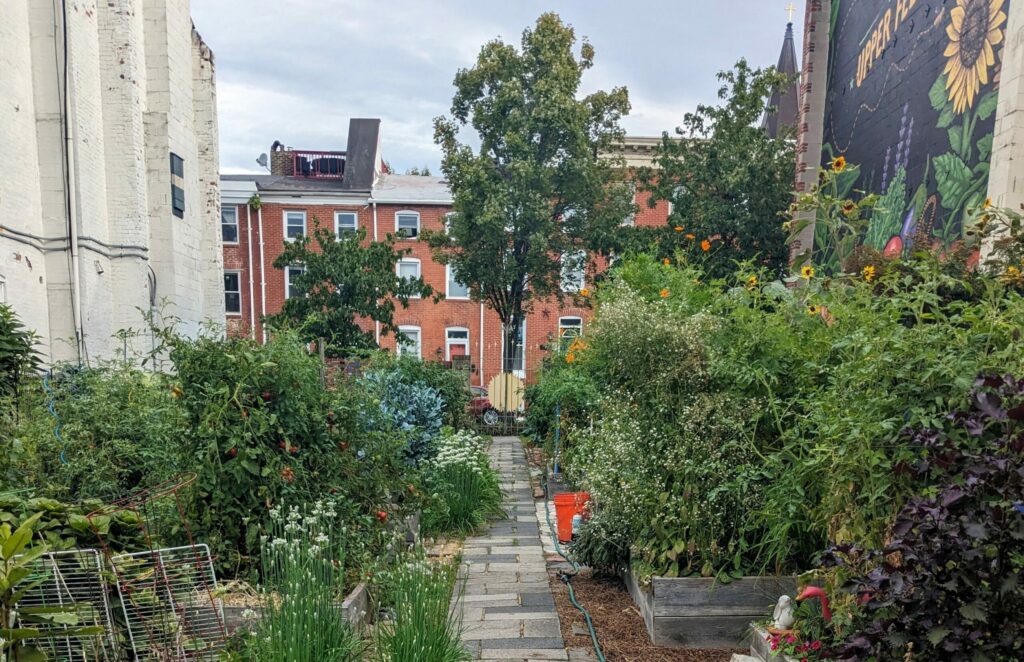Throughout Baltimore City, neighborhood volunteers have worked to turn blighted spaces into temporary and permanent green spaces to grow food and flowers and host community activities. In most cases, though, these volunteers lack the technical expertise or resources to secure and sustain the land. Baltimore Green Space (BGS) was founded in 2007 to fill that gap. BGS is Baltimore’s only environmental land trust that collaborates with neighborhoods by working with residents, Baltimore City government, and other institutions to protect green spaces from loss to private investors.

Community leaders, site managers, and contracting crew for Mount Clare Street Community Garden mark the completion of a new pollinator native perennial garden installed in spring 2024.
BGS has helped protect 19 green spaces over 62+ acres and 93 lots: eight food gardens, five parks, two forests, two farms, one horseshoe pit, and one urban wildlife refuge. BGS strives to ensure that all Baltimore City residents, regardless of income or ethnicity, benefit from green spaces that provide community building, recreation, civic engagement, neighborhood revitalization, access to natural beauty, and a healthier environment.
With support from the Abell Foundation, BGS works with resident leaders to protect the long-term sustainability of and access to spaces in underserved neighborhoods. BGS works with sites on initiatives such as leadership succession planning and youth engagement and has provided consultation and resources to city residents who are looking to start new green space projects or are seeking assistance with the city’s Adopt-a-Lot leasing program and community grants, thus creating a pipeline for future preservation of green spaces.
In partnership with Black Yield Institute, Urban Oasis, and Morgan State University, BGS is preparing to conduct a community needs survey in up to 20 Baltimore neighborhoods to explore residents’ attitudes toward, and utilization of, the natural environment in their local communities, part of a multi-tiered community engagement strategy in neighborhoods where green space interaction is already occurring.
